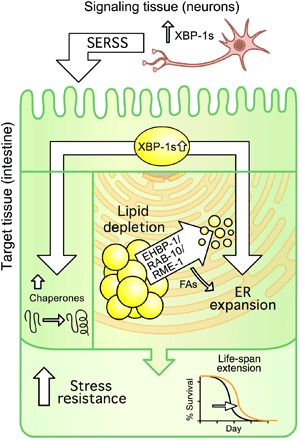Fig. 4. Nonautonomous xbp-1s promotes two independent arms of UPRER: protein homeostasis via chaperones and metabolic changes via EHBP-1.

Controlled induction of the xbp-1s in neurons leads to a UPRER-dependent restructuring of the ER morphology in target cells (i.e., intestine). This restructuring coincides with the lipophagic depletion of intestinal LDs and is necessary for the metabolic change and longevity seen in this model. Moreover, loss of lipophagy reverses the lipid depletion, as well as life-span extension in this paradigm. The longevity conferred by lipophagy-mediated lipid depletion is independent of the canonical chaperone induction by XBP-1s, and both are necessary for the life-span extension found in neuronal xbp-1s animals. Last, activation of lipophagy by overexpression of ehbp-1 is sufficient to promote lipid depletion, remodel ER, and extend life span. FAs, fatty acids; SERSS, secreted ER stress signal.
